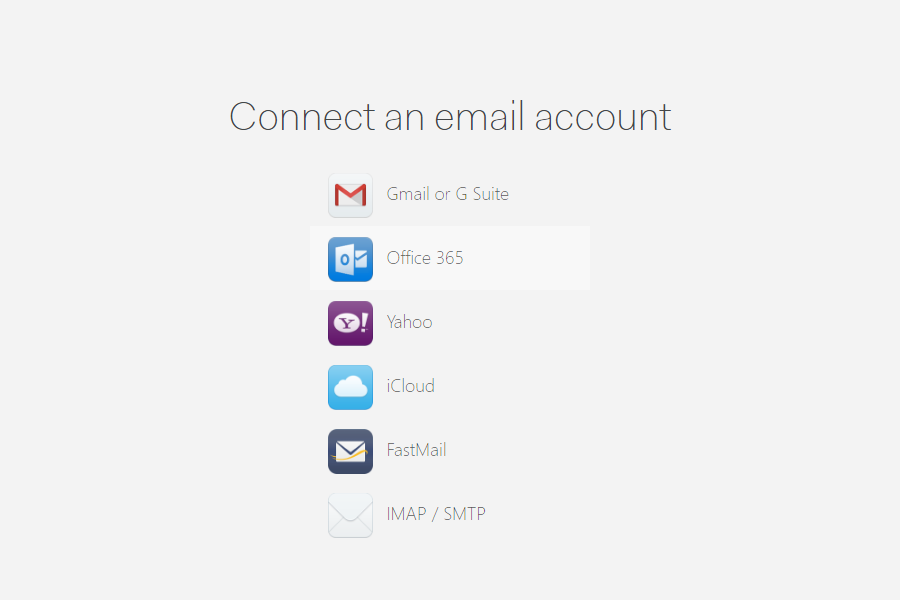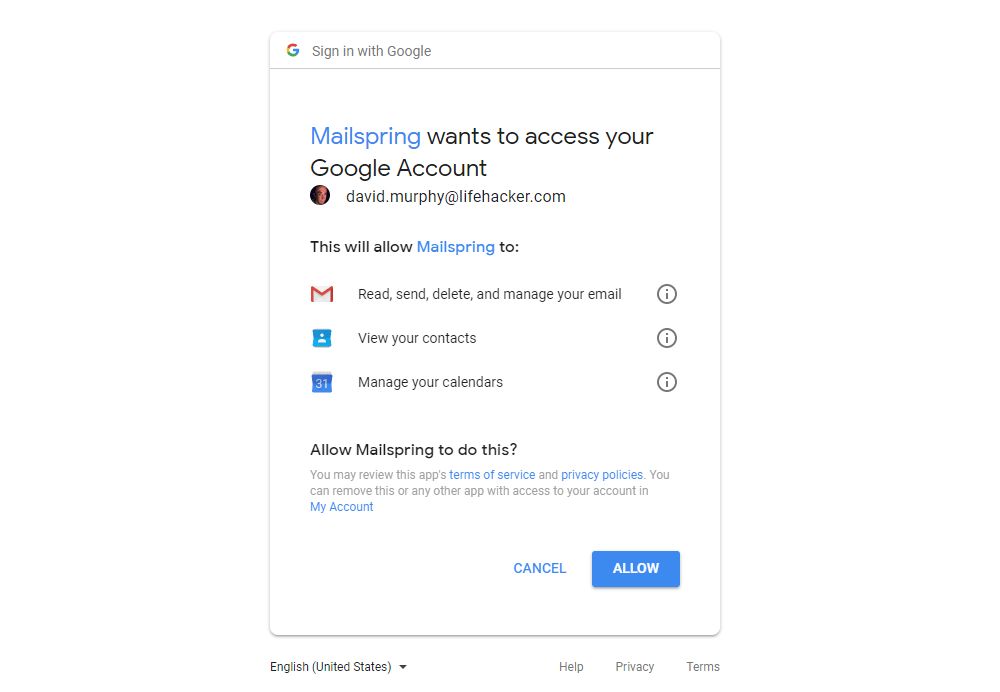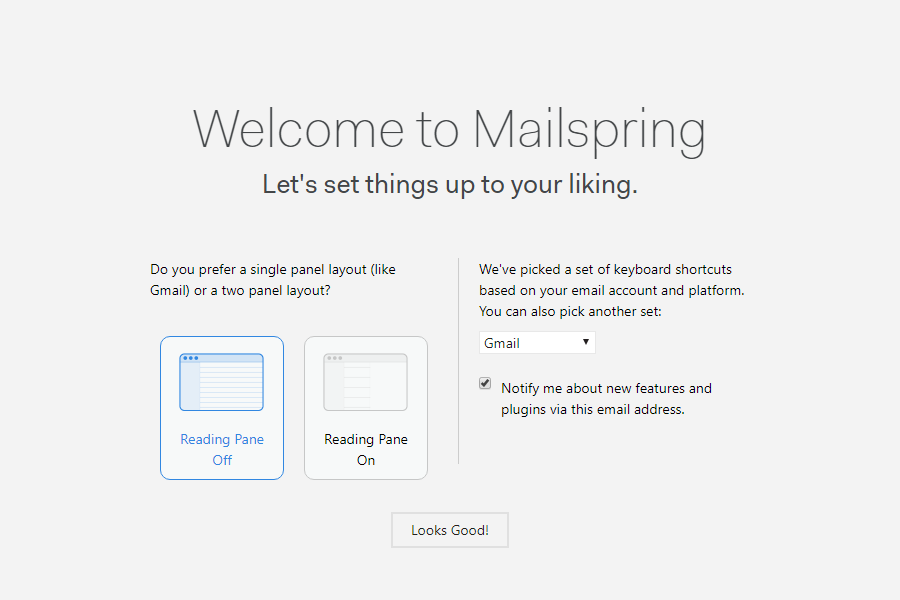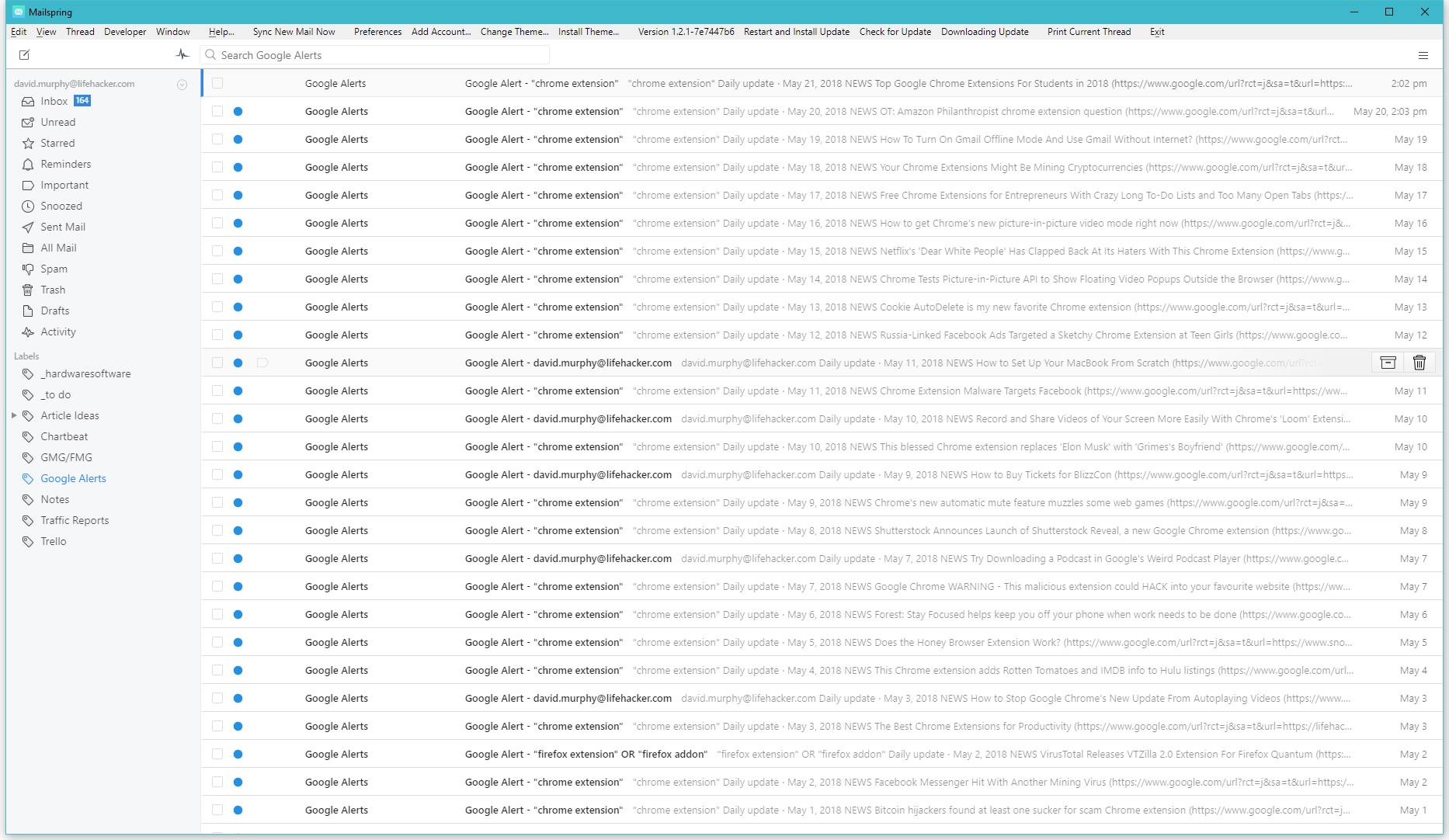Unless you’re the world’s biggest fan of Microsoft Outlook, odds are good that you don’t use a desktop email client at home. You probably use a web-based email service, and your daily routine probably involves firing up your browser to delete, move, and otherwise ignore your messages. Third-party apps like Mail (for Windows or Mac) be damned.
In fact, this is the very question Ars Technica’s staffers recently debated among themselves: Is there any good desktop email client anymore? This question used to have a handful of great answers: Thunderbird, Sparrow, and Mailbox, to name a few. The previously decent email apps that haven’t been wiped off the digital Earth aren’t being updated anymore, which isn’t the best practice when it comes to inbox security.
Unless you stick with your operating system’s built-in Mail app, or give Microsoft Office an expensive try, the only free desktop email software that doesn’t seem to be terrible nowadays is an open-source app called Mailspring. Admittedly, I have not used it much myself, since I only use desktop email apps when my employer demands it, but some Ars Technica commentators swear by it — as well as the site’s own IT editor and national security editor, Sean Gallagher:
“I average close to 7000 emails a week now. I’ve taken to using MailSpring, an open-source mail client that I use on Linux (my preferred desktop environment for a number of reasons) to cope with multiple webmail accounts, and I have aggresive spam filtering. I tend to keep emails either in my inbox or in archive so that I can search them for contacts I’ve had on specific topics. I have learned to stop worrying and love my “unread” number.”
Mailspring is available for Windows, Mac, and Linux. Getting it set up (on Windows) is a pretty simple process. The app will want you to create a special Mailspring ID to use the app, which is one of its few flaws compared to other “just import your email account and go” apps.
From there, you simply pick your email account provider from a list of popular providers.

Since I only have Gmail accounts to connect to Mailspring, I was pleased to see that the app actually jumps you out to the web to complete the configuration rather than asking you to type in your user name and password directly into the app. (Since my Gmail password is huge, copying and pasting it is a pain.) If you’re already logged into your email account on the web, you’ll have to authorise Mailspring to access its contents.

I was also thrilled to see that Mailspring actually comes with different viewing options that can attempt to emulate your web-based experience (as best a desktop app can).

It’s also worth noting — and I’m glad the app puts this up front — that the free version of Mailspring lets you connect a maximum of four email accounts. You’ll have to pay $US8 (~$11) monthly to get more, and to also access some Mailspring’s fancier features: read receipts, message snoozing, the ever-useful “send later” command, and follow-up reminders.

Still, the basic version of Mailspring is a pretty no-nonsense email client that feels speedy to use — now that I’ve actually given it a try for a day or so — and is pretty well-organised. I’m not sure there’s enough to lure me away from Gmail, especially if you’re a big fan of the priority or “focused” inbox concepts, which Mailspring lacks, but I can definitely see Mailspring finding a happy home on the desktops of people who just want a simple list of unread emails instead of bells, whistles, or a gaudy user interface.

Comments
One response to “Try Mailspring If You’re Tired Of Terrible Desktop Email Apps”
Dark mode them! Yeah I’m gonna get me some!
My favourite used to be the client built into Opera. After that Thunderbird was my go to. But many versions were buggy and it never played that well with Exchange servers.
The difficulty now is finding a client that can not only handle multiple different server types (through various associations I have Exchange 2010, Office 365, Gmail and IMAP accounts) for email, but also sync all of their calendars too. So far, eMClient is the only one that fits the bill.